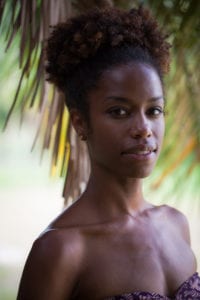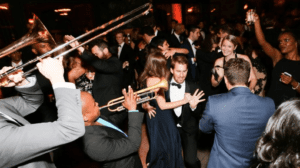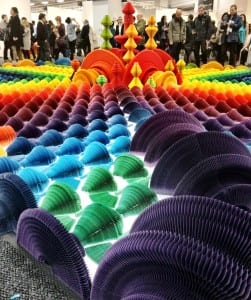The art world has cultivated a slew of creative-minded individuals – but some of these people take their passions to new heights and become innovators. The list goes on and on: curators, art advisors, painters, street artists, gallery owners – all contributing their vision and originality to the world.
These progressive, goal-oriented and dedicated minds are climbing the ladder to success wrung by wrung, and we at Art Zealous find it imperative to root for them on their way up.
The following list was created to showcase young creatives who we believe are contributing to the art community in a raw and inspiring way. Maybe you’ve heard of some of them, maybe you haven’t, and that’s the point. These young entrepreneurs, artists, and innovators, who are full of inspiration and fresh perspectives, are all trying to make it in the art industry.
To all the younger members of the art world who are devoted and dedicated to their craft, this is our “30 Under 30-ish” list, Part 1.
1. Amani Olu, 36, Arts Writer & Independent Curator
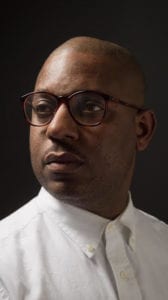
AZ: How did you get into the art business? What were you doing before this?
AO: I have been a serial entrepreneur all my life. Born and raised in Philadelphia, my first business was in 1986. I sold a “collection” of “crystal” rocks that I borrowed/stole from the local electricity plant. Each one sold; a major milestone for a six-year-old. With regard to art and culture, I started in 2002 as the publisher of b.informed magazine, which covered art, culture, music, fashion, etc. I was 22, and a recent college dropout making a living as break-dancer. I did not officially come into the art business until August 2005, which is when I co-founded Humble Arts Foundation. Next March we’ll celebrate our twelfth year of supporting and promoting new art photography.
AZ: What is the most exciting aspect of your job?
AO: I have been in service of artists, art businesses, and institutions since 2002, and it’s the service part that is the most rewarding. I have worked as an arts writer, independent curator, gallery director, and currently am the founder of Olu & Company. We are a marketing, public relations and business consulting firm for the arts and beyond. I am most excited when my friends, colleagues, and clients realize their dreams, be their best selves and, hopefully, make some money. After taking a four-year hiatus, I will curate my first exhibition of new paintings by artist Jeff Cylkowski at Storefront Ten Eyck during Bushwick Open Studios, which takes place this October 1 and 2 from 11am to 7pm.
AZ: Advice for young people starting out in the art world?
AO: Maintain a sense of humor (we’re not saving any lives by being in the art world), adhere to the Golden Rule, and get everything in writing.
AZ: Most memorable art moment?
AO: I am a black man from the mean streets of Philly who made it in the art world. Every moment is memorable.
2. Mark Dorf, 27, Artist
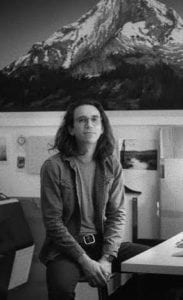
AZ: If you weren’t an artist, what would you be?
MD: As anyone does, I daydream about other professions and wonder what it would be like to have a life in astronomy or physics. But those generally remain dreams as one of the greatest parts of working in a creative mode is that I am able to interact with all kinds of people that work in a wide variety of fields. I get to taste different flavors from many different areas of work and study, but still return to my practice, to resolve what I learn from these other areas of interest. In that regard, my dreams of other professions are satisfied because I get to cross into so many different realms.
AZ: Who was your single biggest influence?
MD: I’m not sure that I have one, to be honest. It’s hard to pinpoint a greatest influence. Everything influences me in one way or another. A creative practice is an amalgamation of a life of experience. I make work about what interests me and my aesthetics come from those things that I consume in my day to day.
AZ: Dream Collaboration?
MD: Albeit impossible, my dream collaboration would be with Superstudio which was an experimental architecture firm based in Florence in the 1960’s.
AZ: What advice would you give a young artist just starting out in the art world?
MD: Find a job that doesn’t exhaust you so much that you cannot create work. Making work, of course, is the most important part of keeping a creative practice, but you also of course need to eat, so you need a job. Don’t only find a job that supports you financially, but also one that perpetuates your practice — something that provides not only a means of sustainability, but additionally one that gives you tools or materials that you think might help to push you forward. Be sure that all parts of your life are useful.
3. Carmen Hermo, 31, Assistant Curator at the Brooklyn Museum
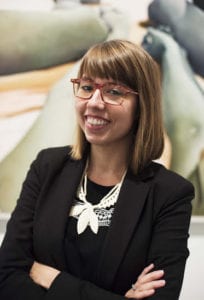
AZ: How did you know you wanted to be a curator?
CH: It was a fairly delayed discovery. Growing up, I always knew I wanted to write, perhaps as a journalist, and loved spending time in museums. I didn’t really connect the two until an undergraduate professor took me aside on the last day of Art History 101 to encourage me to take my interests further; I owe her a great debt for that! Though my undergrad art history training was somewhat traditional (my thesis was on performativity in Goya’s self-portraits), I was able to supplement it with internships at museums and by engaging with more contemporary work. That simultaneous balance of academics and experience was really fruitful for me, and helped to expose me to a wide variety of ideas and artists from which I could untangle my own interests.
AZ: Do you curate with a certain purpose or message in mind? Socially, emotionally, and or politically?
CH: I really believe in the ways in which exhibitions can inspire a moment of discovery—whether that’s an unknown strain of connection among known artists, revealing new interpretations of established permanent collections, or redressing the canon of art history to make it more inclusive and more inspiring to greater audiences. That moment allows for a flexible relationship between the viewer’s own experiences and point of view, and the ideas embedded in an artwork. Whether affirming, confronting, or challenging perceptions, art opens up a space for measured thought that feels fleeting in our daily lives.
AZ: What advice would you give a young curator just starting out in the art world?
CH: I consider myself a young curator! And I am still learning how to spend more time with the material I really love, rather than running to every “must see” exhibition. While keeping conversant with the rest of the art world is important, deep engagement with the artists, periods, and themes that interest you is invaluable to shaping your curatorial perspective and understanding what you can contribute to the conversation. Oh, and keep a really rough diary of what you see (or at least what you like!).
AZ: Who do you idolize within your profession?
CH: Connie Butler, Chief Curator of the Hammer, is a major touchstone for me in terms of using objects and exhibitions to contextualize and tell underserved narratives, especially in her dual engagement with historical and contemporary work—very similar principles to the abiding goals of the Elizabeth A. Sackler Center for Feminist Art at the Brooklyn Museum!
4. Jamel Robinson, 37, Artist

AZ: Do you create with a certain purpose or message in mind?
JR: I create with the intention of answering my calling and honoring God by using the gifts He’s given me. It’s like a visual conversation between us that the world can bear witness to; God whispers and I answer back visually. My work is definitely more emotional than specifically social or political, although those categories are informing my emotions all the time.
AZ: Who was your single biggest influence?
JR: When I look back over my entire life, I’d have to say that my mother is my single biggest influence – just from the way she lived her life out in the service of her four children as a single parent. She didn’t have my father to help her raise me, and she didn’t always have the help of my three siblings’ father to raise them, and she never let any of that stop her from providing the best life for all of us. She showed me that no circumstance could ever stand in the way of what one is passionate about. For her, it was her children; and for me, it’s the artwork and the art career that I’ve given birth to.
AZ: What advice would you give a young artist just starting out?
JR: “Always Be Creating” is a mantra that I’ve been living by since I began this journey but I suppose it’s how I’ve always lived out my life in one way or another so that’s the first piece of advice I would give. It’s a “create and let everything come to you, but go out there and get it” kind of paradox that you have to live out as an artist. The second most important piece of advice is to be professional. Make to-do lists and check off all the items, create databases and know who in your network you need to be showing your product to and who you need to be sitting down with to discuss your ideas and plans. When I’m painting, I’m thinking about art and the artistic process but once I put my tools down, I’m thinking like a fully operational business, and that’s what keeps me successful.
AZ: Dream collaboration?
JR: At the start of 2017, I’ll be doing a fashion collaboration with Miguel Antoinne that will bring to life ideas that I had when I was first introduced to the brand a couple of years ago. Other dream collaborations involve partnering with major brands to use art as a way to raise funds for social issues – not a new idea, just a new face and name to add to the roster!
5. Rozsa Zita Farkas, 28, Curator

AZ: What advice would you give a young curator just starting out?
RF: Find your own interests, work with friends, and take pride in project management (all the boring logistical stuff). Curation isn’t just about your own ideas or framing.
AZ: What is the most difficult part of your job?
RF: Time – the affective labour involved can sometimes be deeply unrewarding. If I am off my email for a day, I generally have upwards of 50 emails that need to be read and replied to. Then there is the labour of care that doesn’t stop irrespective of how you are feeling or what is going on in your life. Then, of course, some of the social side (some is fun of course), but most art workers have this “being present” obligation.
AZ: Most exciting exhibition you’ve seen this year?
RF: I loved the Hilma af Klimt at Serpentine, Martine Syms at ICA, and Emma Talbot at the Freud Museum.
AZ: What made you decide to become a curator? Did anyone influence your decision?
RF: It kind of just happened. I didn’t know the word ‘curator’ until my third year at university. I just started a space to show people who weren’t getting shown and as a place of assembly, and then the space and me both evolved, culminating in my being ‘a curator’ and having the opportunity to do projects outside of Arcadia Missa as well, that I am very proud of those projects, such as rematerialising feminism, ways of living (at DRAF) and rehearsals in instability (for curated by_vienna at Andreas Huber Gallery).
6. Bryant Toth, 28, Curator
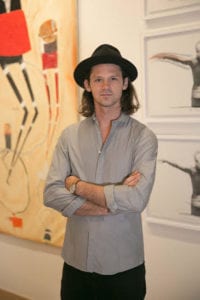
AZ: When did you realize you wanted to be a curator full time? What were you doing before this?
BT: I have always been interested in the art world — specifically collecting and curating work from different cultures. Cuba, for me, was the catalyst of change from a career in the hospitality world as the Membership Manager of Soho House New York & Soho Beach House Miami to Bryant Toth Fine Art, a pop-up gallery concept, and Cuban Art Curator.
The moment I disembarked on Cuban soil roughly six years ago, I quickly identified a real thriving, captivating culture. Everything is decidedly Cuban – the art, music, culture, and community. There is honestly no place like it. The explosion of culture and lively rhythm parading through the dimly lit streets, the colorful architectural facades, and the joyful and kind demeanor of the Cuban people – they all weave together to create a truly striking yet captivating place. Bryant Toth Fine Art was created from an appreciation of Cuba, its culture and creative talents.
AZ: Your ultimate goal in the art world?
BT: I am not only committed to introducing under-represented Cuban artists to new markets, but also to challenge the gallery-based model that currently dominates the art world. Through experience-focused exhibitions and collaborations, my goal is to create emotional connections through each of my shows—first and foremost around the art, but also accompanied by music, design, aesthetic, and community.
AZ: Who do you idolize within your profession? Dream collaboration?
BT: It’s difficult to name just one individual who I idolize within my profession—I choose to pull inspiration from multiple industries that I strive to encompass within my Gallery concept: Danny Meyer’s honest approach to hospitality; Soho House’s idea of community; and Fábrica de Arte Cubano’s emphases of collaboration. My dream is to collaborate Art x Music x Hospitality x Culture—there are many dream collaborations within these individual fields.
AZ: How would you describe the work you curate?
BT: I try to curate an experience. Art is the main focus but the environment which surrounds the works serve as complements. With that said, that work is, and will always be, decidedly Cuban and true to its history. You can see for yourself at my Hector Frank exhibition, Cuba to New York, which will be on view November 3rd – November 10th at Gallery 151.
7. Anne Huntington, 31, Founder of AMH Industries

AZ: What led you to pursue a career in the art world?
AH: I don’t look at it as a career in the art world, but rather a life in the art world. My passion and love for art drive every art decision I make and have led me to this “life in the art world.”
AZ: Best art moment of this year?
AH: This is a hard one because so many moments are special. The first moment that comes to mind was during an early evening event with the Whitney Museum in Wainscott chatting with Mary Heilmann about the pink chair I purchased from Hauser & Wirth – the chairs that were on the roof of the Whitney when it opened in the Meatpacking District. Mary ended the conversation with “Anne is the lady with the pink chair – the pink lady!” Well, for those who know me, pink is my favorite color, and this left a lasting smile; and for those who know Mary, she is the kindest and whimsical person. This was a special moment.
AZ: Who do you idolize within your profession?
AH: I idolize strong, passionate, female leaders. Two that come to mind are Brooke Neidich and Jennifer Stockman.
AZ: What advice would you give a young person just starting out?
AH: Always be you and always be true. No one can take that away, though some may try.
8. Alonsa Guevara, 29, Artist
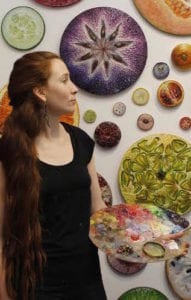
AZ: What events in your life led you to start painting? Did you ever picture yourself doing anything else?
AG: Since I was very young I always felt attracted to different kinds of art, not just painting, but drawing, singing, playing instruments, telling stories, etc. I started oil painting with my grandmother when I was 12 years old. Grandma Maruja used to paint, draw and sculpt all the time and she used to keep me entertained, making things next to her . She is very critical and very straight forward, so she would always tell me what was right and wrong. Even now that we are far away from each other – because she lives in Chile – she tells me what she likes and doesn’t like about my paintings.
I cannot imagine myself doing anything else. Painting for me stops the time, I never get bored or tired; it’s totally the opposite: I get full of energy and excited. Sometimes I get tired of ideas or images, but never of the act of painting.
AZ: Who was your single biggest influence?
AG: This might sound a little weird and silly, but if I remember correctly, the very first time I thought I wanted to make paintings was when I watched the movie “The Witches” from 1990. I must of been 6 or 7 years old so I don’t remember the movie very well. But in one of the scenes, a man brings home a painting that depicts a house in the countryside with a small pond with white ducks. One day the little daughter of this man was cursed by one of the witches, which trapped the little girl inside of the painting. The girl would appear in different places of the canvas every time people would look at the painting. And I thought: I want to make something magical like that.
AZ: What advice would you give a young artist just starting out?
AG: First of all, being an artist is not easy. Artists, in general, have to work very hard to get their work out there. You will be your own assistant, manager, and boss. For sure you’ll find hundreds of obstacles and your work will probably be more rejected than accepted. Sometimes your work will consume you so much that you’ll lose track of time and of reality (that can be a good or bad thing) but most importantly: being able to work every day doing something that you love is incredible! The tears and mad moments won’t compare with the joy and the pleasure that making art gives you. Especially when you have worked so hard for it! I feel very lucky and privileged to be an artist.
AZ: How did growing up in Chile and Ecuador influence the work you create today?
AG: Childhood memories are like tattoos on my brain. I always come back to those memories of being surrounded by fields with trees, flowers, domestic animals like horses, cows, pigs, chickens, ducks, turkeys, rabbits and wild animals like snakes, scorpions, iguanas, sloths, turtles, beautiful colorful insects and birds – feeling a strong connection with nature, not just love for it, but also fear. Technology devices were rare, and the outside was the only place to get entertained and creative.
Now that I live in NYC I’m trying to bring that back with my paintings, that connection between people and nature. In my Ceremony series, the unclothed bodies become one with the soil while covered with a mix of fruits, vegetables and flowers as a connection with earthly gifts. By incorporating fresh and vibrant, and rotten and blemished produce, the work represents the full cycle of life, making fertility and fecundity coexist in a parallel with decay and death. The addition of memento mori, such as insects, snails, and lizards, hidden among the lush fruit and flesh, further symbolizes the inevitable end of the life cycle.
9. Kyle Jacques, 28 & Alexander Johns, 29, Curators
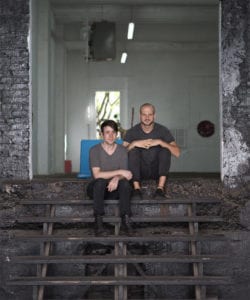
AZ: How did you come about being a curator?
KJ & AJ: Alexander and I happened into curating in a very haphazard but natural way. We met about a year before opening SIGNAL, and after a few months of knowing each other socially, Alex asked me over to his place to see some old work he had made. I was inspired and, as I was actively spending all my time doing interior design work, and felt the urge to collaborate on something creative with him that could be entirely our own. After a few months of seeking out a space for us to share, the vision shifted from simply that of a studio to a gallery – a place where we could curate and exhibit other works. I don’t know exactly what it was that flipped that switch, though a lot of it had to do with our skill sets, social/community desires and to fill in the gaps of what we felt was missing in our version of New York City. It came naturally – to be fully emerged in the artist’s process and vision and do whatever we could, despite limited means, to actualize it.
AZ: Do you curate with a certain purpose or message in mind?
KJ & AJ: Our purpose has continued to define itself over the last four years since our inception. We were never of the mind that “we just want show our friends.” It was always about seeking out art/ideas/people that were able to open us up and show us something new – both with their work as well as through working with them. The longer we’ve been at it, the deeper we’ve dug to find work that really does this. We want our program to be a reflection of the world we want to live in, the things we want to see and the people we want to be surrounded by. Initially it was all about having this large raw space and trying to find ways to activate it. We now try to push that to the background a little, and try to insist that people don’t just ‘go huge’ because they can. The goal is not to have formal ties between the artists and shows, so much as have it all be pushing it as far as it can go. This can mean socially/politically, something we spend a lot of time thinking about, as well as both a deeply personal and emotional. It just has to feel right and simultaneously be deeply personal and singular output that can reach/change a lot of people.
AZ: Do you remember the first show you ever curated?
KJ & AJ: It would be Bennet Schlesinger’s ATLAS – our first show at SIGNAL. In many ways, it was getting the space around the work up to speed, as we knew we could trust Bennet to deliver. We tend to do mostly solo shows, so our method of curation is more about diving into the individual and helping extract and communicate the right parts than it is about combining a series of people or works. That said, over the last year in particular, we’ve really begun to piece together more group scenarios, which is a whole new frontier.
AZ: Who do you idolize within your profession?
KJ & AJ: I think Thomas Lax (MoMA, Studio Museum) is a boss. Insane how much he’s accomplished so far in his career.
AZ: Dream collaboration?
KJ & AJ: Let’s just say that it involves an airplane.
10. Rujeko Hockley, 32, Assistant Curator at the Brooklyn Museum
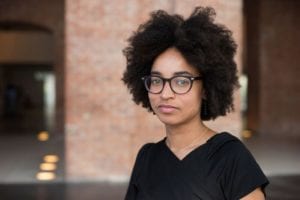
AZ: What advice would you give a young curator just starting out in the art world?
RH: I am a young curator, so I’ll just share what I try to do: Listen a lot. Read a lot. Look a lot. Talk to artists. Be friends with people: your own age, older than you, younger than you, in the ‘art world,’ and out. Be organized. Nurture your own ideas. Work well with others. Always be gracious.
AZ: Do you curate with a certain purpose or message in mind? Do you have a favorite show you’ve curated?
RH: Not exactly, but I am committed to artists and to honoring them and their work. On a fundamental level, I am driven to make the magic happen for the artists that I work with, to the best of my ability. That can be through research, writing, installation, troubleshooting, public lectures, private conversation, translation, etc.: it depends on the needs of the situation and artist. Thinking through questions of social justice, politics, equity, and the disruption of accepted narratives – whether in art history or the broader world (past, present, and future) – is central to my life and work. My favorite show is always the one I’m working on currently, but if we’re looking back, Crossing Brooklyn: Art from Bushwick, Bed-Stuy, and Beyond (2014) would be my pick. It encompassed all I’ve written above, and really, it was my first major show!
AZ: What was the catalyst in your life that led you to this moment in your career?
RH: There have been many catalysts, and hopefully there will be many more for the many moments to come, but one of the most major ones is the The Studio Museum in Harlem. I worked there very briefly many years ago, but the influence of that institution is unshakeable. I credit it, and the people who are devoted to it – educators, curators, guards, artists, donors, collectors, etc. – with putting me on my path, and sustaining me along it. Because of The Studio Museum, I have lifelong friends, family, inspiration, and a deep understanding of what this work is about, why it matters, and why we do it.
AZ: Who do you idolize within your profession?
RH: ‘Idolize’ is a strong word, so I’ll borrow a phrase from artist Lorraine O’Grady, who prefers ‘life references.’ My life references are many, but to start: Lorraine, Linda Goode Bryant, Senga Nengudi, Lowery Stokes Sims, Thelma Golden, Helen Molesworth, Thomas Lax, Amanda Hunt, Deborah Willis, Kellie Jones, Naomi Beckwith, Adrienne Edwards, Sadie Barnette, Joeonna Bellorado-Samuels, Kimberly Drew, Radiah Harper, Eugenie Tsai, Anne Pasternak, Sandra Jackson-Dumont, Melissa Levin, Ruby Lerner, Franklin Sirmans, Charles Gaines, Okwui Enwezor, Christine Y. Kim, Rashida Bumbray, Elvira Dyangani Ose, Arthur Jafa, Cauleen Smith, Kynaston McShine, Christopher Myers, Hank Willis Thomas, Chris Lew, David Hammons, Marcia Tucker, Carrie Mae Weems, and about a thousand other people I’m forgetting.
11. Celine Mo & Ed Victori, 30, Gallery Owners
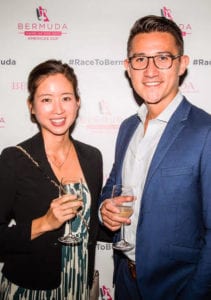
AZ: What made you decide to open a gallery? What were you doing before this point in your career?
EV: I’ve always been drawn towards working with people who have some visual element to the work they do. Being the son of a painter, art was always something that consumed my periphery, regardless of what I was interested in at any moment in time. The idea of art school was compelling during my studio classes in high school, but I nixed the idea just before my senior year to instead study math and finance. However, after quantifying risk on a trading floor for a few years post-college, I realized it was never where I wanted to be, nor was it a place where I could imagine myself being for the next few decades. Fortunately for me, the global financial crisis gave me a tap on the bum to set foot on a new path. A couple of months of travel, art world networking, and assisting my father snowballed into my first Miami art fair in 2012, and subsequently a dense schedule of international exhibitions and a full roster of artists. But honestly, it was just a series of terrifying follow-your-gut moments that organically lead to the next opportunity, and eventually paved the way to the partnership and gallery that stands today.
CM: I’ve always wanted a space where I could show artists what I am truly passionate about and admire. Opening my own gallery allowed me to do that. Prior to V+M, I was working at a small gallery in Chelsea, which eventually closed. Being out of a job, I seized the opportunity to start something completely new. I had worked with Ed on few projects previously, so I reached out to see if he was interested in partnering up and that’s how V+M started.
AZ: Dream collaboration?
EV: Perhaps with the US Government to create sprawling experimental exhibition spaces and areas across deserts in the southwest. I think there’s an incredible amount of monumental artist ambition that goes unrealized. Think about Michael Heizer. He’d probably be a good person to get involved with this.
CM: I would love to do a public art collaboration with Creative Time or the Public Art Fund. I think both organizations are doing some incredible things, and public art has always been an interest of mine.
AZ:What advice would you give a young person just starting out in the art world?
EV: 1) Figure out what your motivation is and hold on to it. The art world doesn’t owe you anything and it’ll take before it gives. 2) NO job is too degrading if you want to run a gallery, even if it means cleaning up after your neighborhood vermin. 3) Collaborate. 4) Have a card.
CM: Do your own thing and let your freak flag fly! Follow your gut, make mistakes, learn from them and take chances. Meet as many people as possible because the relationships you create are important!
AZ:Who was your single biggest influence?
EV: My father, Victor Victori. He’s the reason I’m compelled to bring really smart talented artists to others’ attention. He spent a lifetime creating works for the masses – tens of thousands of paintings, but now at 73, he can create for himself. All artists should be able to create for themselves.
CM: My biggest influence is definitely my mom. She took a chance 20 years ago to start her own business and always encouraged me to do the same. She has always been really supportive and taught me so much about building a business from the ground up. (Shoutout to Victori + Mo and their exhibition 30 under 30-ish for inspiring the naming of this article!)
12. Elizabeth Margulies, 29, Project Manager at Culture Corps
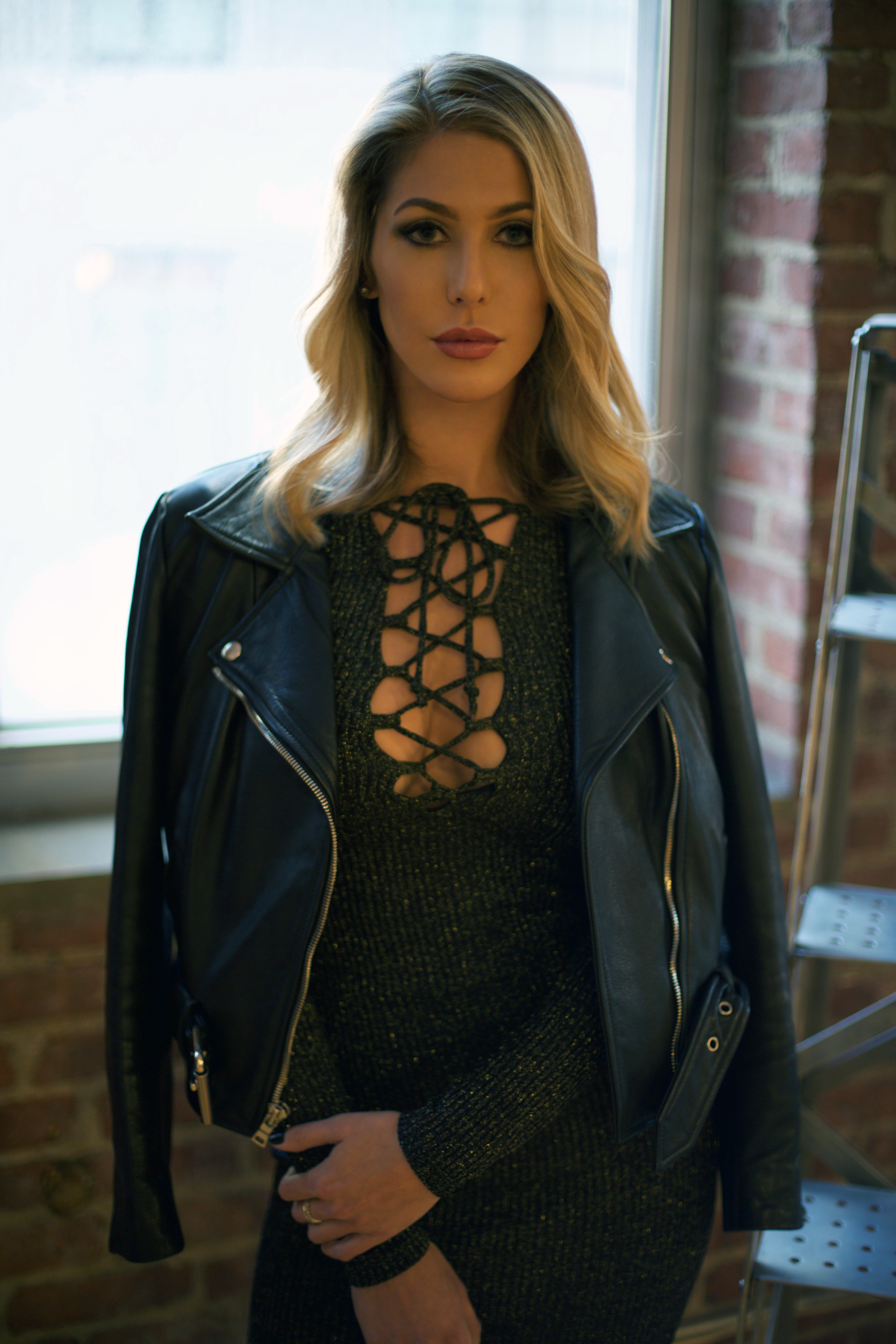
AZ: Current job? Best part about what you do?
EM: I am Project Manager at Culture Corps, an art consultancy focused on bringing art to private sector developments, hotels, and entertainment. There are so many great parts about my job so it’s difficult to choose just one. I get to work with incredibly talented people in different creative industries to develop amazing art programs. The possibilities are endless when it comes to transforming and enhancing any particular space through art, and I love bringing unique and exciting ideas to each individual project.
AZ: Advice for young people just starting to collect art?
EM: I believe that people buy art for three reasons: 1. The way it makes them feel when they experience it 2. The concept and meaning of the work (usually within an art historical context) 3. As a potential financial investment. Reason 3 should be of least importance. If you don’t know enough about art history to make an informed decision regarding a potential acquisition, read something and teach yourself.
AZ: Favorite art moment from the past year?
EM: My favorite art moment from the past year is, hands down, the Frank Stella retrospective at the Whitney. Frank is my favorite living artist and he has such a diverse body of work. I interned at the Whitney while the show was being organized, which was not only educational but so exciting for me; especially after the museum’s new downtown location had just opened!
AZ: Who do you look up to in this industry?
EM: I look up to Yvonne Force and Doreen Remen, who founded Culture Corps and also started Art Production Fund fifteen years ago. They’ve devoted over a decade of their lives to bringing art to the world! They are both career-driven women who balance work, family, and fun.
13. Hiroyasu TWOONE, 31, Artist
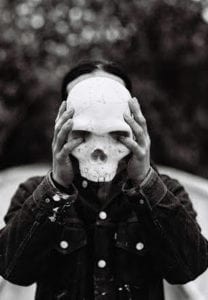
AZ: How did you start painting on such a large scale? Do you remember the first mural you ever spray-painted?
HT: I have been painting walls more for over ten years now. I guess in the beginning, I just painted anywhere I could paint and ten years ago murals weren’t as accepted. So I went to abandoned buildings or just painted at night on the street.
I think the first wall I painted was when I was 18 in Yokohama, Japan, somewhere under the train bridge, with a bunch of friends with cheap crappy paint. Then I started to paint more walls when I moved to Melbourne, where it was more accepted. People didn’t care about graffiti as much in Japan, so I met a lot more people who did graffiti or painted murals.
AZ: How did the transition from Japan to Melbourne affect you and your work? Do you think it prompted you to work more or less?
HT: Well I don’t think it was just the move that changed, as I had just finished high school when I moved to Melbourne. But yes, I did start doing more artwork.
AZ: Have you ever experimented with different art forms and or mediums?
HT: I am always trying, and experimenting with new forms and materials. I think it’s a good process to push my concept, style, practice, and myself in general.
AZ: What is the most exciting part of your job?
HT: I’m doing what I want to do all day, every day. So pretty much everything I do is exciting. I don’t even know if you can call this a job. It’s work, but it’s never felt like a job.
14. Simon Abrahms, 26, Gallery Owner

AZ: Why did you decide to open a brick-and-mortar gallery?
SA: I first started representing artists in early 2010, and by 2013 I knew I wanted to open a public space – but I enjoyed the flexibility of being able to visit artists and clients when it made sense to, which is something that becomes more difficult when you keep regular business hours. It was when I began showing larger scale works that I knew I wanted a public gallery.
AZ: What do you think the future holds for glassmaking as a fine art?
SA: Historically, glass has not really gotten its due as a medium of fine art, as it’s largely seen in a craft context. I think as the work progresses and explores deeper topics that relate to society, the medium, particularly sculptural pieces, will have a much stronger place in the context of the fine art world.
AZ: How have the artists you’ve worked with impacted you and/or your business?
SA: Being a young dealer, it’s really important to keep an open mind as to what you can learn. As a business that has always focused on its artist relationships first, I’ve had the opportunity to understand the perspective of the artist; their family lives, techniques involved, troubleshooting the logistics of making bigger and better work, developing new series and the business side of their world. It’s greatly impacted my ability to help them pursue their goals and create a better understanding of the whole picture for their audience as opposed to just seeing a finished piece in a gallery, as well as enhanced my project management skills, especially with installations.
AZ: What advice would you give a young person just starting out?
SA: Be open. Some of my best relationships have come from introducing myself to people in unexpected situations.
15. Sebastián Velasco, 28, Artist
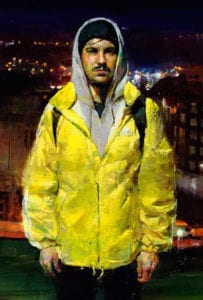
AZ: Do you create with a certain purpose or message in mind?
SV: I think I do, but I prefer when the message is not too obvious. It depends also on the project I’m working on.
AZ: Who was your single biggest influence?
SV: So many, I can’t say one: Axel Void, Antonio Lopez or classic painters like Velázquez or Sorolla. In music: Erik Urano & Zar Uno. In films, maybe Jim Jarmusch.
AZ: What advice would you give a young artist just starting out?
SV: Just working in an honest way. A lot of work and an open mind to new things. Even though I think it’s good to focus and not approach too many different fields, unless you are a genius or something.
AZ: Dream collaboration?
SV: I had the chance of painting people who I admire already, like Axel Void or Sainer (Etam Crew) Maybe with Zoer and Velvet would be very nice. Also, maybe an album cover for any band that I like.
Stay tuned for Part II next month!
Editors // Kristina Lopez, Mary Alice Franklin

